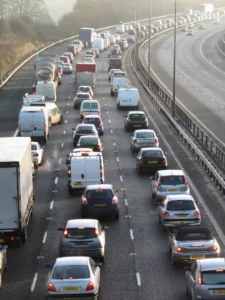The Department for Transport (DfT) has published a new standard-PAS 2161, for how highway condition data is collected and reported, opening the way for a new approach to road condition categories and highway inspections.
The PAS 2161:2024 represents a landmark introduction in the management and reporting of road conditions for councils in England. Drawn from the insights of the 2018 Local Roads Funding and Governance report by the Transport Select Committee, it aims to standardise road condition monitoring (RCM) data across the country.
The primary objectives of the PAS 2161:2024 are multifaceted, focusing on creating a unified and efficient approach towards road condition monitoring. These include:
- Establishing Condition Categories: By defining clear condition categories for road networks, the PAS aims to facilitate a consistent understanding and assessment of road health.
- Consistent Data Handling: It emphasises adopting a standardised methodology for the capture, processing, and reporting of RCM data, ensuring uniformity across different jurisdictions.
- Technology Classification: The specification outlines the different types of technology that can be utilised in RCM data collection.
- National Reporting Standardisation: It seeks to unify the format and structure of reporting condition categories to the Department for Transport, fostering national coherence.
- Deliverables Format: Standardising the deliverables for RCM data ensures that the information provided to stakeholders is consistent and easily interpretable.
- Technology Capability Demonstration: Lastly, it aims to validate the capabilities of RCM technologies in accurately reporting road condition categories, ensuring reliability and efficacy.
Not only does PAS 2161 refine the process of national reporting, but it also offers guidance for local asset management, despite varying approaches by different authorities.
While the PAS does not enforce requirements for asset management purposes, it acknowledges the local variability in asset management practices among authorities and aims to provide a comprehensive guide to optimising the application of RCM data.
The hopes are that its introduction will enhance the efficiency, reliability, and consistency of road asset management across England. Route Reports is already working with councils to help implement the standard for their Road Condition Data. As councils adapt to this new framework, the long-term benefits expected are those of improved road conditions, better informed asset management decisions, and more effective use of resources.
Under the new system, roads are categorised as follows with ‘potential maintenance treatment options’:
- Category 1, No deterioration: Pavement is not considered for maintenance
- Category 2 Minor (and/or aesthetic) deterioration: Light maintenance eg minor patching
- Category 3 Moderate deterioration: Locaised intervention or mid-life preventative maintenance
- Category 4 Moderate to severe deterioration: Rehabilitative maintenance, perhaps full carriageway
- Category 5 Severe deterioration: Structural maintenance (full carriageway resurfacing or reconstruction)
Once captured, RCM data is fed into England’s local authorities and the DfT, as part of a national reporting requirement, to help manage the condition of UK road networks and road assets.
Nick Fleming, director of transport and mobility at the BSI said: “Robust data collection is at the foundation of effective monitoring and maintaining our road network.
“This new standard responds to the progress seen in terms of advances in new techniques and technologies to capture road condition data. It is designed to deliver greater consistency and confidence in road condition data collection, reporting and its application to help improve the overall condition of our road network and ultimately ensure drivers can use our roads with confidence.”
The DfT said: “The Department of Transport has collaborated with the British Standards Institute, the Transport Research Laboratory, local highway authorities and the road condition monitoring sector to introduce this new data standard for road condition. The standard will bring innovation to road condition monitoring while retaining quality, supporting local highway authorities to optimise their maintenance of local roads, which are an essential national asset.”





















